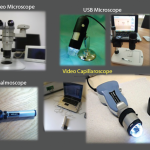Wearing heated gloves continuously takes planning, time, effort and dedication, and admittedly, it can be cosmetically awkward. However, given the alternative—Raynaud’s, severe pain and decreased hand function—I’d give heated gloves two thumbs up!
Rosemarie Curley, MPT, DPT, completed her transitional doctorate from Northeastern University College of Professional Studies in July and practices physical therapy in inpatient rehabilitation at Johnston-Willis Hospital in Richmond, Va. Personal experience with topical steroid withdrawal in children and diffuse systemic sclerosis fuels her desire to research and present the patient’s perspective in evidence-based practice.
Disclosure: The author has no potential conflicts of interest to disclose. The information presented is based on personal experience, which the author hopes will encourage further dialogue and research on the use of continuous local heat in the management of hand pain and dysfunction in scleroderma.
Tipsa for Continuous Heated Gloveb Use
Wearing Time
- Daily, continuously (as desired) in the fall and winter to prevent Raynaud’s attacks.
- Remove for hygiene and when wearing gloves is not feasible.
- Remove before going to sleep.
- Wear to prevent Raynaud’s episodes, whenever fingers hurt or are cold, or when you want warmth and protection for fingers.
Use
- Typical day: Cover glovesb with knit gloves to keep them clean. Use vinyl gloves in place of knit gloves if getting hands wet. They can be worn under garden gloves, snow gloves, etc.
- Obtain two sets of batteries to alternate; use one set while the other set is charging. Use car and wall adapters when you will be sitting in one place for a while. This saves the portable batteries for when you are active.
These suggestions are for heated-glove use in the colder months. Glove use decreases in the warmer months, but on the days that you just want comfortable hands, heated gloves hit the spot.
Skin Care
- Heat can increase skin dryness. Moisturize hands more frequently, or try this technique occasionally: apply lotion or petroleum jelly, don vinyl gloves, then don heated gloves.
Safety
- Follow manufacturer’s instructions for use.
- Digital ulcers: Consult your physician for appropriate wound care. Practice good infection control measures, and keep inside of gloves clean.
- Do not fall asleep with gloves on.
- Shut off gloves and disconnect batteries when you take them off. This will prevent accidentally turning them on, causing overheating and glove damage.
- If pain and/or skin appearance are worse with gloves on, remove them and consult your physician.


